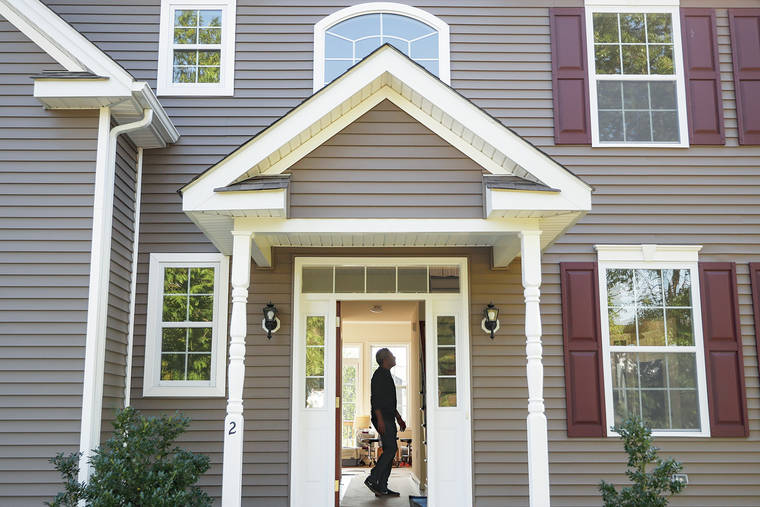If you’re saving for your first home, there’s no shortage of advice out there — some of it questionable, even if you do have an avocado toast habit. Still, it’s true that your down payment may be the biggest check you ever write.
But once you move in, it’s also true that the cash tends to just keep flying out of your bank account like that money-with-wings emoji. If you drain your savings on closing day, you’ll have to delay furnishings or repairs, to say nothing of less-pressing cosmetic changes.
A sizable cash cushion makes the cost of owning a home more manageable. But even if you lack that cushion, it helps to at least know what to expect and what else you may need to finance or start saving for again. Here’s what I learned.
1. THINGS WILL BREAK
I’ve lost count of the handymen, electricians and plumbers who have paraded through the home my husband and I bought in October 2019. As I type this, our dryer is being repaired for the second time since we moved in. All told, we’ve spent around $1,300 on small fixes.
Repairing issues yourself is cost-effective, but only if you know what you’re doing. If a repair involves dangerous work, or you lack the skills and equipment to do it safely and correctly, hire a licensed and insured professional.
WHAT SHOULD YOU DO?
— PAY CLOSE ATTENTION TO THE HOME INSPECTION. “Leaking roofs, mold, electrical and plumbing issues are the mostly commonly noted concerns on an inspection report,” says Day Coker, owner of AC by Day C, an HVAC maintenance and repair company based in High Point, North Carolina. If the inspection turns up issues, negotiate with the seller to either repair them or lower the selling price.
— FIND OUT THE AGE OF MAJOR APPLIANCES. When you can estimate how many years an appliance has left, you can save up for its replacement.
— CREATE A REPAIR FUND. Aim to save around $5,000, says Chelsea Lipford Wolf, co-host of the “Today’s Homeowner” TV show and creator of “Checking In With Chelsea,” a home improvement blog and video series. “That would cover most home systems that you would need to repair to keep your house running.”
2. YOU’LL WANT TO MAKE YOUR HOUSE A HOME
As a renter, you may have put up with lumpy sofas or rickety chairs, thinking eventually you’d have “real” furniture in your own home like the kind you see at a carefully staged open house. But you’re purchasing a structure; the furnishings typically don’t come with it.
We spent around $8,000 on furniture this year.
Another sneaky expense? Smaller accessories like towel racks, shower curtains, shelves, and storage bins that make a space functional.
WHAT SHOULD YOU DO?
— SAVE ON FURNITURE AND DECOR. Brand-new, solid wood furniture is expensive, but antiques are well-constructed and can be had for a fraction of the price. Between antique stores, estate sales and Craigslist, we spent less to score high-quality pieces.
— DO THE SMALL STUFF YOURSELF. When in doubt, watch a tutorial on YouTube or ask for guidance at a hardware store. I’ve hung art, shelving and curtain rods, and our current project is painting our guest room, which doubles as my office. We hire a handyman only for more complicated work.
— PLAN FOR THE BIG STUFF. “Beyond the first year, that’s when you see people taking on bigger projects,” Wolf says. “They’ve had a chance to live in their house and use the space.” Begin to budget for renovations, especially if you need to hire a general contractor. Wolf recommends getting on the contractor’s schedule during their low season and buying some items when they happen to be on sale, even if the installation has to wait.
3. EVEN ‘MOVE-IN-READY’ HOMES NEED WORK
A new neighbor told me she spent $500 on an electrician to replace older, ungrounded electrical outlets throughout her house. We lucked out with modern outlets, but not enough of them. We hired an electrician at $75 an hour to install more than a dozen additional outlets. Neither our house nor our neighbor’s was sold as a fixer-upper.
“The first year of homeownership is usually spent finding out all of the flaws you didn’t notice during open house and the final walkthrough,” Coker says.
WHAT SHOULD YOU DO?
— BE NOSY AT THE OPEN HOUSE. Pepper the real estate agent with questions, flip all the light switches and open all the closets. Look for furniture in an illogical place, which may be covering damage. “It’s perfectly acceptable to lift up a rug to make sure there’s nothing funky under there,” Wolf says.
— ASSESS WHAT CAN WAIT FOR LATER. Your home inspector can identify what needs to be fixed now and what can wait. You can begin saving for future renovations while you make do with the cramped kitchen or lackluster backyard.
— DON’T PUT OFF MAINTENANCE. Little issues balloon into expensive repairs. Routine maintenance on even new appliances and systems can help them last longer and run more efficiently.


